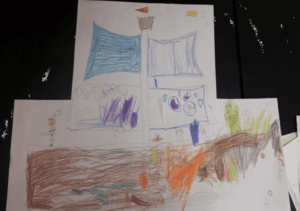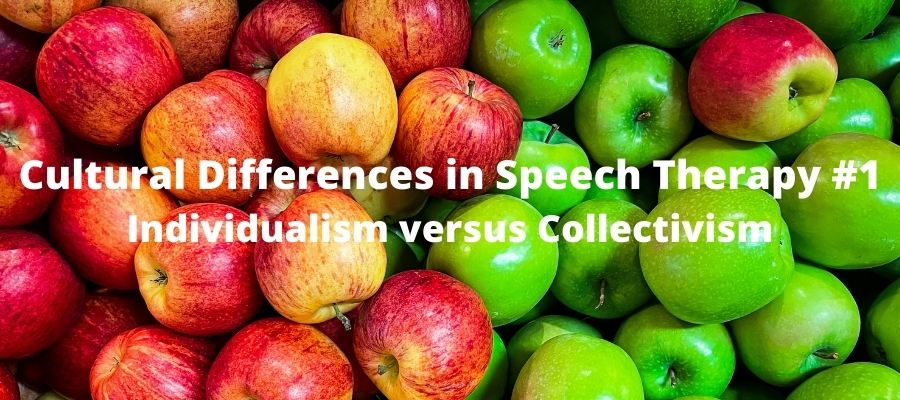A culture is termed individualistic when great value is placed on individuals and their rights and decisions. Members of individualistic societies may tend to rely less on their relationships. More often than not, they pride themselves on individual traits and value this in others. By comparison, a culture is collectivistic when great value is placed on the group and membership in the group. These societies form close ties between individuals and reinforce extended families and collectives where responsibility is shared for fellow members of the group. Decisions and actions are made that serve to support the group (Hofstede, 2001; Tomoeda & Bayles, 2002).
The Latino culture, as an example, is often considered collectivistic, with extended families seen as fundamental and the foundation of how the family members relate to the world (Trotter, 1981). The family is considered to be the most valued institution, with extended family members typically included in decision-making and child-rearing issues (Maestas & Erickson, 1992). The extended Latino family provides valuable support and assistance, such as additional child care. For example, often grandparents or godparents will help care for the children in a family (Lynch & Hanson, 2004).
As we dive into this blog post and series, we want to acknowledge that parameters have been placed to discuss cultural considerations. There is value in thinking about the complex and valuable nuances of culture; however, for the sake of ease and understanding, binary terms are utilized (individualism or collectivism). We want to acknowledge that the reality of the human spectrum is comprised of individuals who exist in the land of the gray. In other words, a person can exist anywhere on the continuum. Perhaps, in your family, there are tenets of both?
 Individualism versus Collectivism and Treatment
Individualism versus Collectivism and Treatment
Collectivistic parents can be misconstrued as being especially permissive and indulgent with young children. What they see as being caring and loving, individualistic professionals see as the downplaying of independence to the extreme, with children not learning basic skills such as tying shoes, buttoning jackets, or cutting food because everything “has been done for them.” The difference lies in what is expected in the classroom versus what is expected in the home.
Let’s take Phuong, an SLP in our clinic, for example. Growing up, her má and bá planned all of the meals, cooked the meals, set the table and took care of the dishes following the consumption of homemade Vietnamese dishes. There was no expectation for Phuong to help. From her parents’ perspectives, food was their “love language”–a way to show they cared and loved their three children. Chores were not a part of their day-to-day. The expectation was for her to eat the food that was placed before her each day. Contrastingly, many of her peers held responsibilities such as taking out the trash, cleaning their rooms and setting the table. The differences were vast, and each family determined their own daily, equally valuable culture.
This is potentially problematic from a treatment perspective because we have to write goals based on age-related expectations. But what about culture-related expectations? Here is a way to think about it: Differences that are due to culture can be rapidly taught. Differences that are due to a disorder take time and a greater level of effort on the part of the clinician.
Two Therapy Questions to take Individualism versus Collectivism into Consideration:
Do your therapy materials focus on an individual creation/contribution or a group project?
One fun way to account for this cultural difference is to simply create a group project where everyone contributes. Here is an example of a pirate ship that was collectively contributed to during literacy-based intervention:

Can a Peer Demonstrate the Skill?
If higher importance is put on the group, then having a group member perform a skill may be a way to show the importance of a skill to your student. This is were the value of having mixed-goal groups comes into play. You can have the articulation kids demonstrate long sentences to the language kids and have the language kids demonstrate sounds.
Individualism versus Collectivism and Assessment
In addition to their parents, children in Latino families are often cared for by extended family members (Lynch & Hanson, 2004). As a result, family members other than the parents, such as grandparents, siblings, aunts, and uncles would add valuable insight into the child’s speech and communication interactions. Furthermore, these extended family members usually take part in decision-making and child-rearing issues and help share responsibility for the children (Hofstede, 2001; Tomoeda & Bayles, 2002; Maestas and Erickson, 1992). Therefore, it is important for the clinician to address the entire family and include family members other than the parents in the assessment process and in decisions regarding the development of the treatment plan.
Placing high importance and having high regard for one’s community is not a bad thing. However, we have to realize that our testing, education, and social structure of the classroom might not value this to the same degree. Our job, as always, is easy. We have to diagnose and treat impairment. We can separate culture from this, learn something about ourselves, and have some fun along the way.
Questions for Big Thinking
Do you come from an individualistic or collectivistic culture? A hybrid? When your parents talked about people they admired, was it for their individual accomplishments, how they acted, or maybe what they did for others? Do the oldest members of your family live with other family members? Are the children or clients you serve similar or different? Just think about it or share your comments below. There’s no right or wrong here, just differences.
In our next essay we will talk about Views of Time and Space.
Want to read about all the cultural parameters in one place, get CEUs and a helpful chart? Check out this course.


 Individualism versus Collectivism and Treatment
Individualism versus Collectivism and Treatment
This is a great post! I shared it with my colleagues.